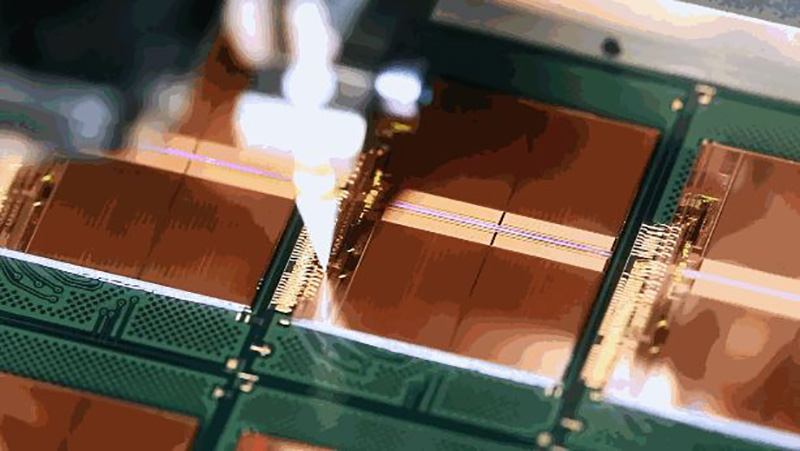What is poor pin tinning? Why does the pin stick poorly? How to fix the pin with bad tin?
Poor pin tinning is usually a problem in the welding process of electronic components, which may lead to problems such as weak welding, poor electrical connection or short circuit. The following are some common causes and solutions that may lead to poor pin tin, and come and see it with Xiao CAI.

What is poor pin tinning
“Poor pin tinning” means that in the welding process of electronic components, the solder fails to cover the pin surface completely and evenly, resulting in unstable welding, poor electrical connection and even short circuit. This problem may be caused by a variety of factors, involving welding process, material quality, operating technology and other aspects.
Poor tinning of the pin will have the following effects:
1、Poor electrical connection: Poor pin tinning may lead to unstable electrical connection quality, which affects the normal signal transmission and current conduction between the components and the circuit board. This can lead to unreliability of electronic devices and even cause equipment failure in severe cases.
2、Decrease in mechanical strength: Poor pin tinning may cause the solder to fail to sufficiently wet the pin surface, resulting in a decrease in bonding strength between the pin and the solder. This can cause the pin to fall off, break or loosen under mechanical stress, which in turn affects the structural stability and reliability of the device.
3、Short circuit and leakage: If the solder is poor and the electrical isolation between the pins is insufficient, it may cause a short circuit problem, causing the current to flow on the path that should not be passed, causing the risk of equipment failure, overheating and even fire.
4、Signal interference: Poor pin tinning may lead to instability of signal transmission, causing electromagnetic interference (EMI) or radio frequency interference (RFI), affecting the performance and reliability of the equipment.
5、Difficult maintenance: If the welding is not strong, the maintenance of the equipment after failure will become difficult, because the poorly welded pin may be difficult to reconnect, requiring more time and effort.
6、Unqualified products: If the pin is not found in time during the production process, it may lead to the manufacture of a large number of unqualified products, increasing production costs and waste of resources.
7、Reduced reliability: Poor pin tinning will reduce the reliability of electronic equipment, which may lead to early failure and affect the life and performance stability of the product.
Causes of poor solder sticking on the pin
The following are some of the main causes of poor pin tinning:
1、Improper treatment of the pin surface: there may be oxides, dirt, grease, etc., on the pin surface, these substances will reduce the wettability of the solder, so that the solder cannot evenly cover the pin surface.
2、Improper welding temperature: too high or too low welding temperature will affect the wettability of solder. Too high a temperature may cause the solder to burn, and too low a temperature may not allow the solder to fully melt and wet.
3、Insufficient process control: The lack of strict process control and quality inspection may lead to variation in the welding process, which leads to poor solder sticking of the pin.
4、Insufficient welding time: Insufficient welding time may cause the solder to not sufficiently wet the pin surface, so that a uniform solder layer cannot be formed.
5、Solder quality problems: The use of low-quality solder will affect the welding effect, and the solder may contain impurities or bad ingredients, affecting the wettability and welding performance.
6、Pin material and design: The material and design of the pin will also affect the quality of the welding, if the pin material is not easy to wet or the design is not conducive to welding, it may lead to poor pin tinning.
7、Welding flux problem: the selection and use of welding flux will also affect the quality of welding, improper flux or excessive residual may affect the solder wettability.
8、Improper welding technology and operation: the technical level and operation method of the operator directly affect the quality of welding, the coating uniformity of solder, the control of solder amount and the welding posture will affect the quality of the pin tin.
Solution
The following measures can be taken to solve the problem of poor solder sticking on the pin:
1、Check welding parameters: First, check welding parameters, including welding temperature, welding time and solder amount. Ensure that the welding temperature is suitable for the requirements of the solder and components, the welding time is sufficient, and the solder amount is moderate.
2、Pin surface treatment: If there is oxide or dirt on the pin surface, clean the pin surface with an appropriate cleaner or welding flux to ensure that the pin surface is clean and conducive to solder wetting.
3、Check the quality of solder and flux: Use high-quality solder and welding flux to ensure its purity and quality to improve the wettability of solder.
4、Strengthen process control: In the production process, strictly control the processing technology of the device, especially at the interface between the source area and the limiting layer, control the thickness and quality of the material, which can reduce the occurrence of leakage current.
5、Control welding flux residue: After welding is completed, use appropriate cleaning agent to clean the welding area to ensure that welding flux is completely removed to avoid residues affecting welding quality.
6、Pin design and material optimization: If the pin design or the material itself is causing welding problems, consider adjusting the pin design or choosing a material that is easier to weld.
7、Quality control and testing: Introduce quality control process, including visual inspection, welding connection testing, etc., to ensure that the welding quality meets the requirements.
8、Trace the root cause of the problem: if the problem of “poor pin tin” occurs frequently, conduct in-depth analysis to trace the root cause of the problem, so as to facilitate targeted improvement and adjustment.


